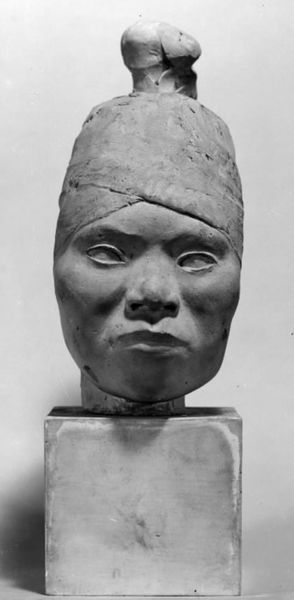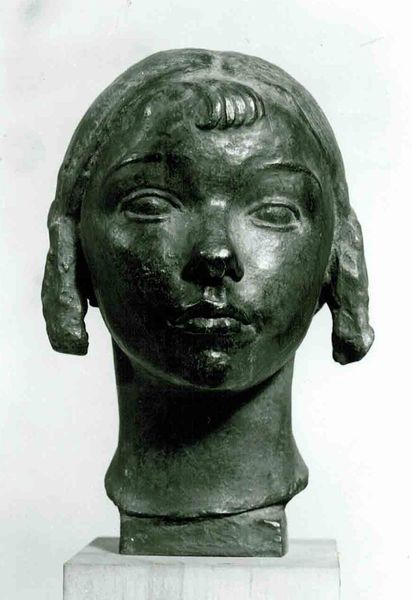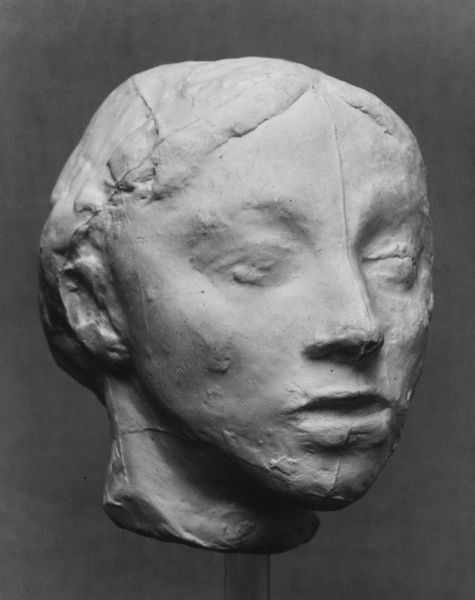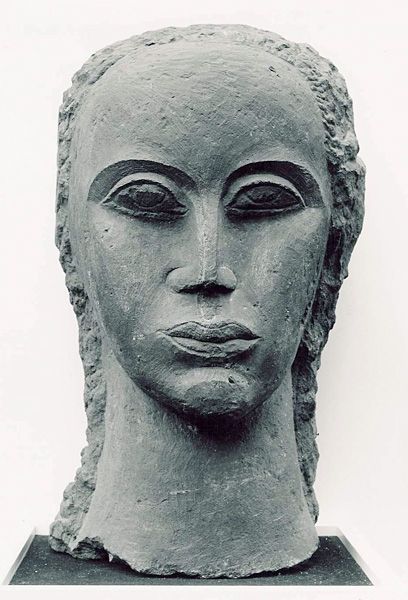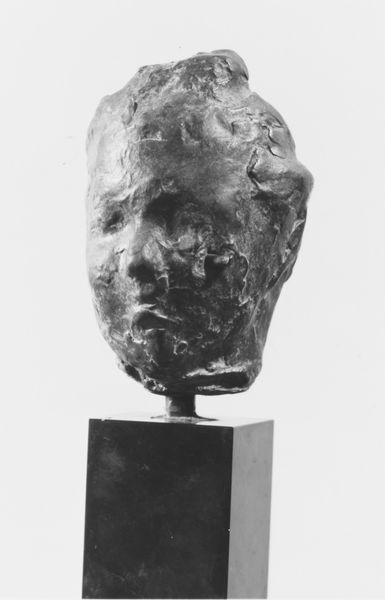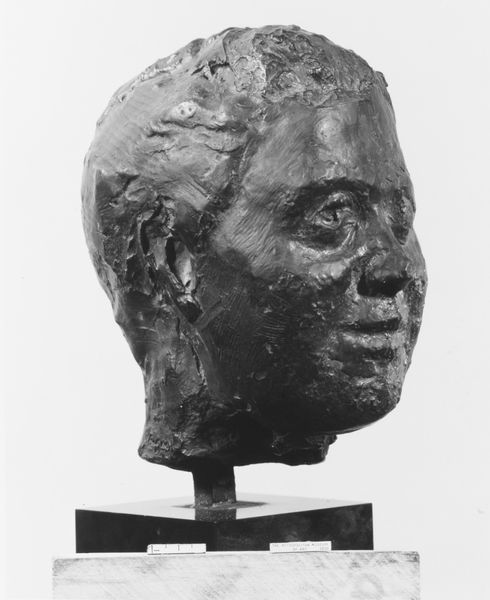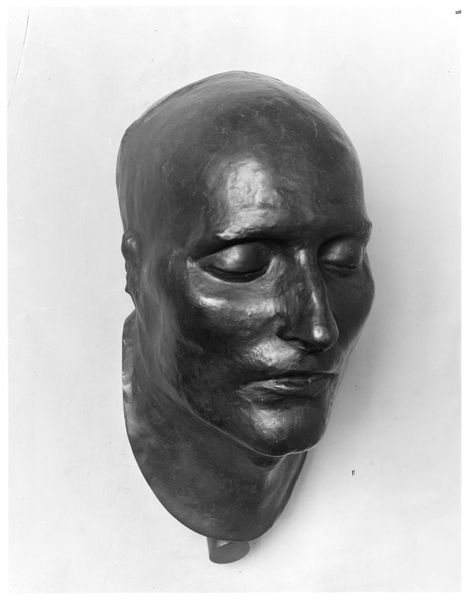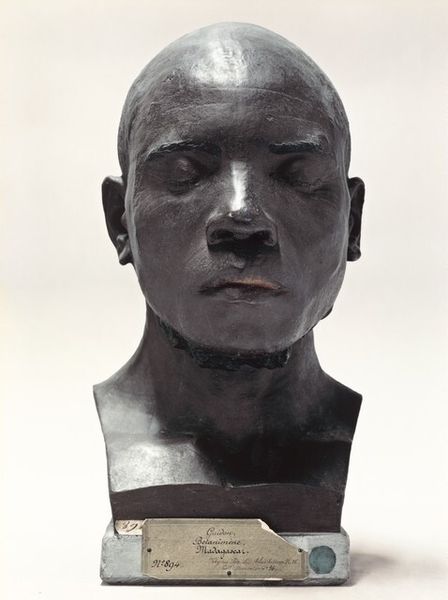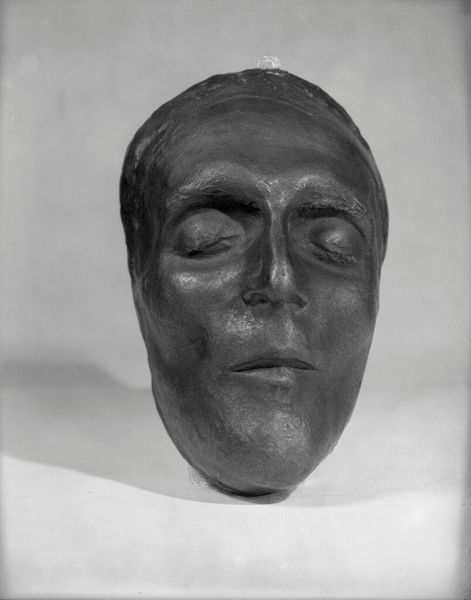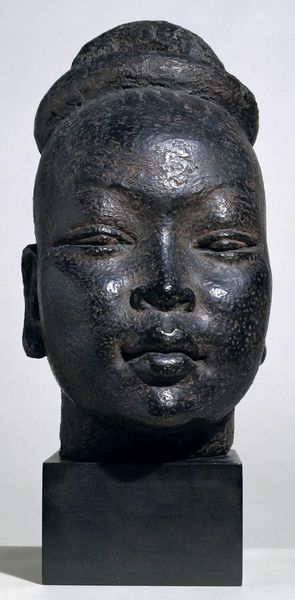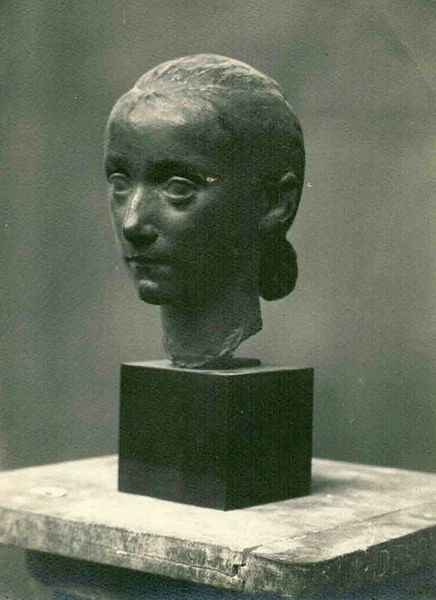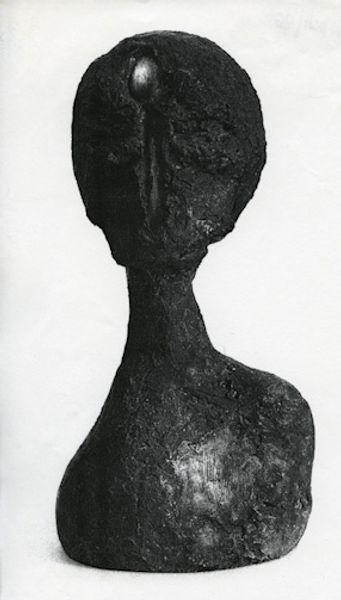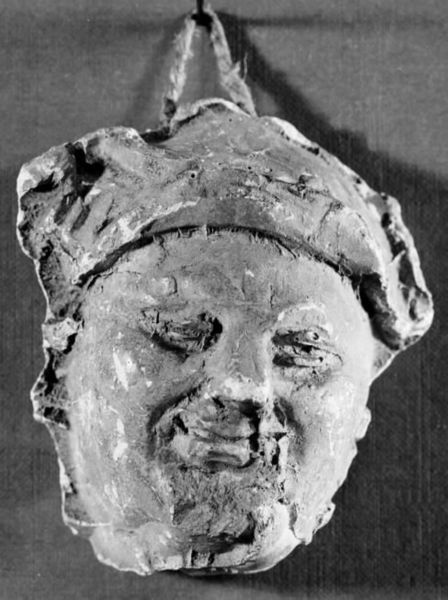
carving, sculpture
#
portrait
#
carving
#
sculpture
#
sculpture
#
black and white
#
monochrome photography
#
monochrome
#
monochrome
Copyright: Giacomo Manzu,Fair Use
Editor: Here we have Giacomo Manzu's sculpture "Sonja's Head," created in 1955. It has a somber, almost melancholic air about it, wouldn’t you say? How do you interpret this work? Curator: Absolutely. Considering Manzu’s post-war context, I read Sonja's averted gaze as a potent symbol of inward reflection, of grappling with trauma and loss prevalent during that era. What impact does the material – the cold, hard carving - have on your understanding? Editor: Well, the monochrome aesthetic definitely enhances the solemnity. The choice to carve it evokes a sense of permanence, but it's a bit rough, maybe unrefined? Curator: Precisely. The unrefined quality clashes with conventional portraiture. Manzu deviates from glorifying the individual; instead, he invites a broader consideration of human fragility. How do you perceive the non-idealized, almost severe, facial features in relation to typical representations of women in art history? Editor: I see what you mean. Traditional female portraits often aimed for beauty and grace, whereas this feels almost… vulnerable. There’s a quiet strength there too, though. Curator: Exactly. This quiet strength transcends idealized beauty, touching upon themes of resilience and internal fortitude. It speaks to the often-unseen labor of women, their capacity to endure and rebuild. Editor: So, it is not just a head… It becomes almost a historical and social statement. I had not really considered the post-war elements influencing this when looking at it initially. Curator: Yes, the piece urges us to actively consider art beyond formal appreciation, viewing it instead as a historical document and powerful commentary of humanity's resilience amid upheaval. Editor: Thank you! I see the sculpture through an entirely new lens now, with a far richer perspective.
Comments
No comments
Be the first to comment and join the conversation on the ultimate creative platform.
